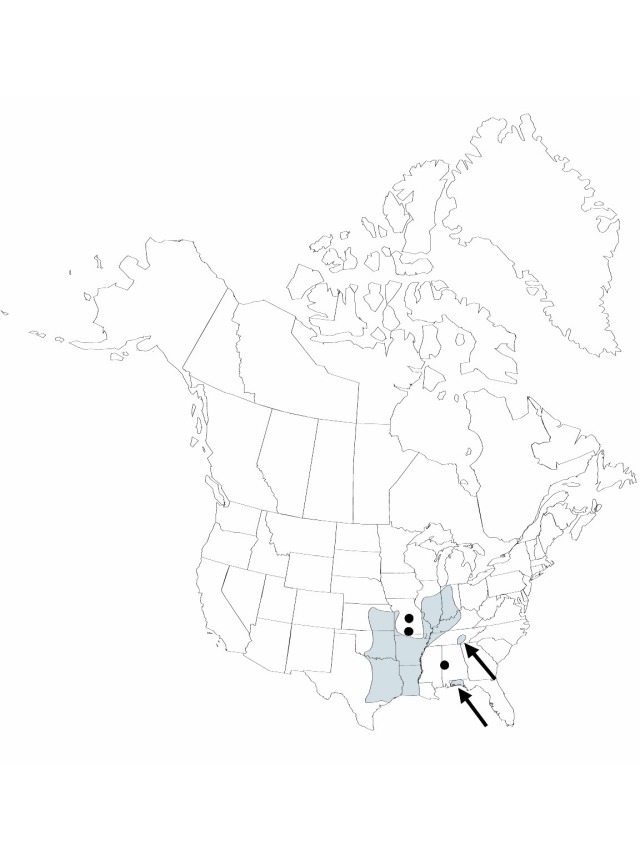Difference between revisions of "Juncus nodatus"
in N. L. Britton and A. Brown,Ill. Fl. N. U.S., ed. 2 1: 482. 1913.
FNA>Volume Importer |
FNA>Volume Importer |
Revision as of 21:01, 16 December 2019
Herbs, perennial, cespitose, 3–10 dm. Roots without terminal tubers. Culms erect, terete, 4–6 mm diam., smooth. Cataphylls 1–2, straw-colored, apex acute. Leaves: basal 1–2, cauline 1–2; auricles 1.2–1.5 mm, apex rounded, scarious; blade straw-colored or green, terete, 20–65 cm × 1.1–3.5 mm, with prominent and conspicuous ringlike bands at position of cross partitions; distal cauline leaves reduced to 2.5 cm. Inflorescences terminal panicles of 30–250 heads, 8–12 cm, branches spreading; primary bract erect to ascending; heads 2–10-flowered, broadly obovoid to hemispheric, 0.3–0.5 mm diam. Flowers: tepals straw-colored, lance-subulate, apex acuminate; outer tepals 1.9–2.2 mm; inner tepals 1.7–2.1 mm; stamens 3, anthers equal filament length. Capsules exserted, straw-colored, 1-locular, ovoid, 1.9–2.5 mm, apex acute, valves separating at dehiscence. Seeds oblong or ellipsoid, 0.5–0.6 mm, not tailed; body clear yellow-brown.
Phenology: Fruiting late spring–late summer.
Habitat: Commonly in shallow water, marshy shores, sloughs, wet flatwoods, and savannas, bogs, ditches, wet woods, shores, in standing water to 3 ft 1 m deep
Elevation: 100–200 m
Distribution

Ala., Ark., Fla., Ill., Ind., Kans., Ky., La., Mo., Okla., Tenn., Tex.
Discussion
Selected References
None.